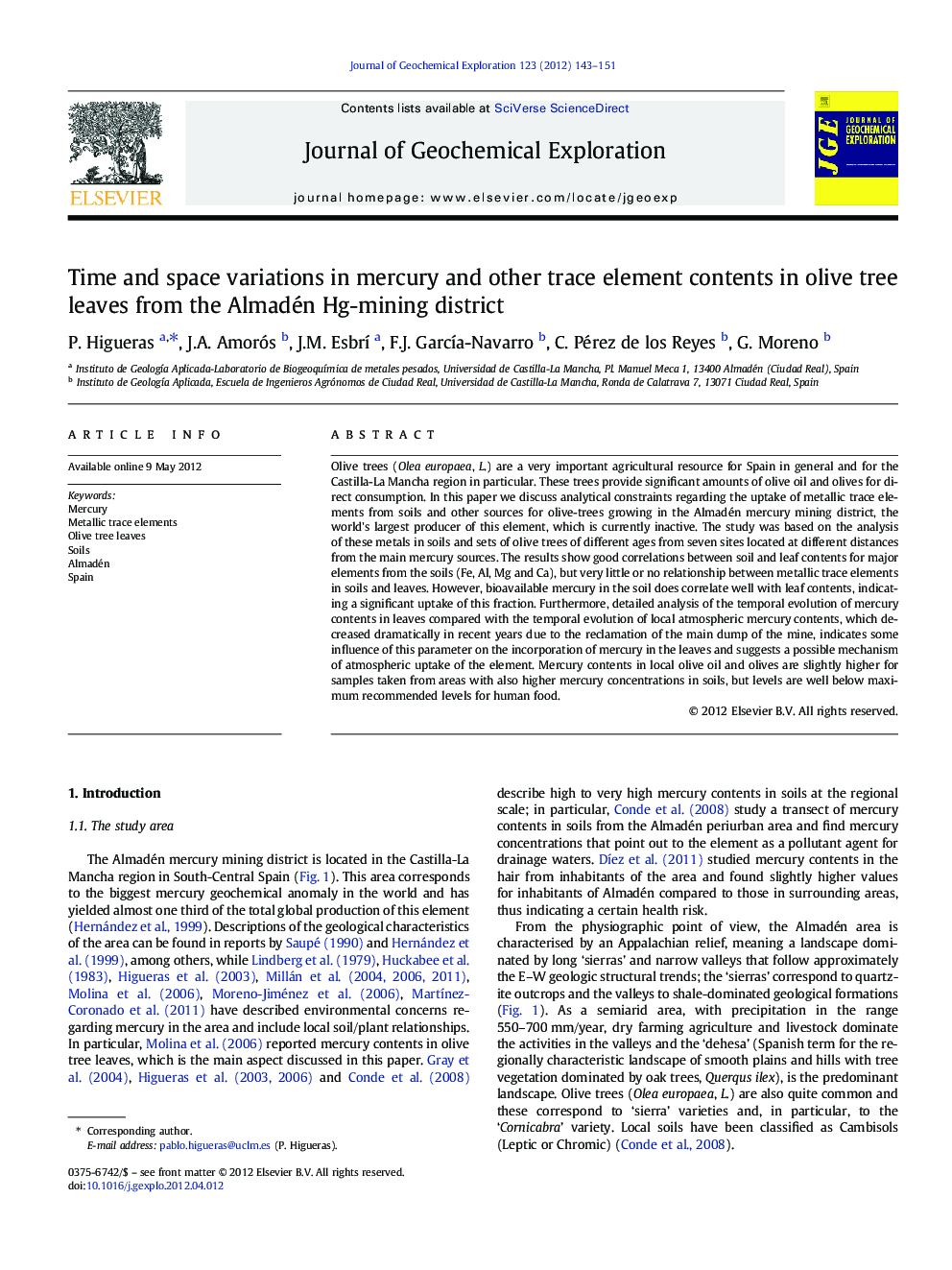| Article ID | Journal | Published Year | Pages | File Type |
|---|---|---|---|---|
| 4457577 | Journal of Geochemical Exploration | 2012 | 9 Pages |
Olive trees (Olea europaea, L.) are a very important agricultural resource for Spain in general and for the Castilla-La Mancha region in particular. These trees provide significant amounts of olive oil and olives for direct consumption. In this paper we discuss analytical constraints regarding the uptake of metallic trace elements from soils and other sources for olive-trees growing in the Almadén mercury mining district, the world's largest producer of this element, which is currently inactive. The study was based on the analysis of these metals in soils and sets of olive trees of different ages from seven sites located at different distances from the main mercury sources. The results show good correlations between soil and leaf contents for major elements from the soils (Fe, Al, Mg and Ca), but very little or no relationship between metallic trace elements in soils and leaves. However, bioavailable mercury in the soil does correlate well with leaf contents, indicating a significant uptake of this fraction. Furthermore, detailed analysis of the temporal evolution of mercury contents in leaves compared with the temporal evolution of local atmospheric mercury contents, which decreased dramatically in recent years due to the reclamation of the main dump of the mine, indicates some influence of this parameter on the incorporation of mercury in the leaves and suggests a possible mechanism of atmospheric uptake of the element. Mercury contents in local olive oil and olives are slightly higher for samples taken from areas with also higher mercury concentrations in soils, but levels are well below maximum recommended levels for human food.
Graphical abstractFigure optionsDownload full-size imageDownload as PowerPoint slideHighlights► We present analysis of Hg and other metallic elements in olive tree leaves. ► We compare leaves and soil metallic contents, including bioavailable Hg. ► Metallic element contents (except Hg) show normal values and no mutual correlations. ► Hg contents in polluted sites are high with correlations between leaves and soil. ► Edible olives and olive oil show slightly higher Hg values than from clean areas.
